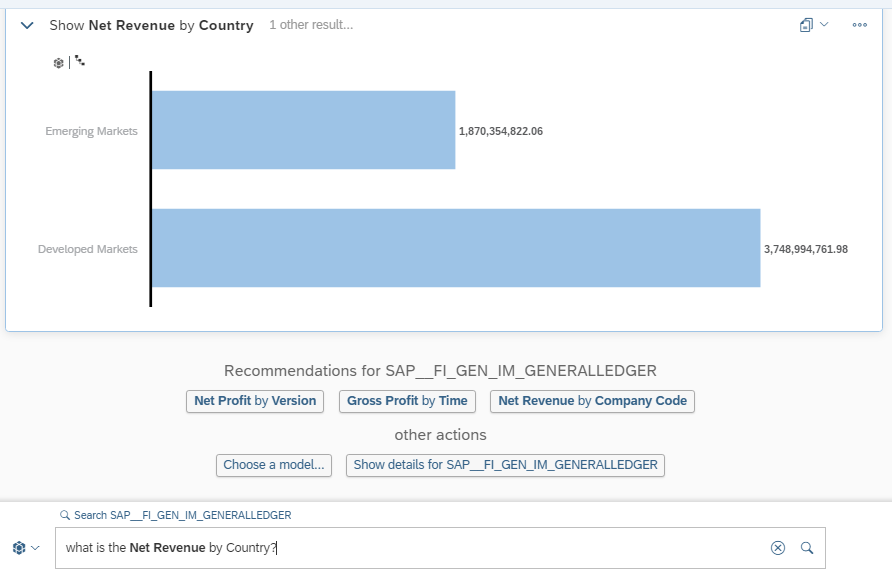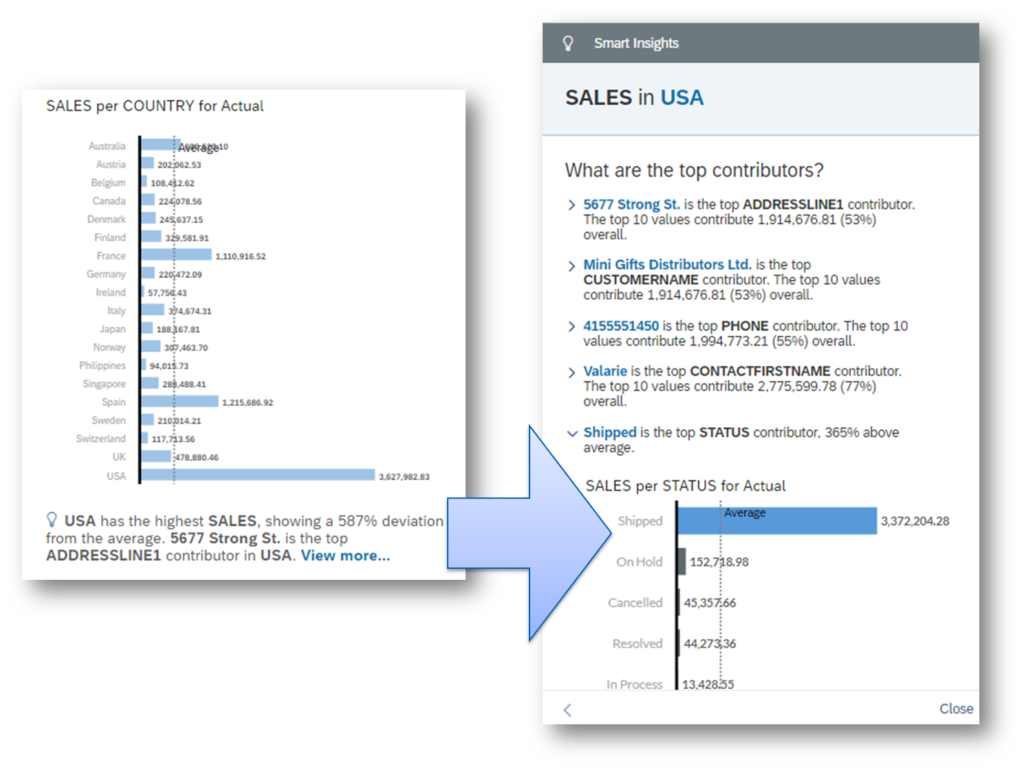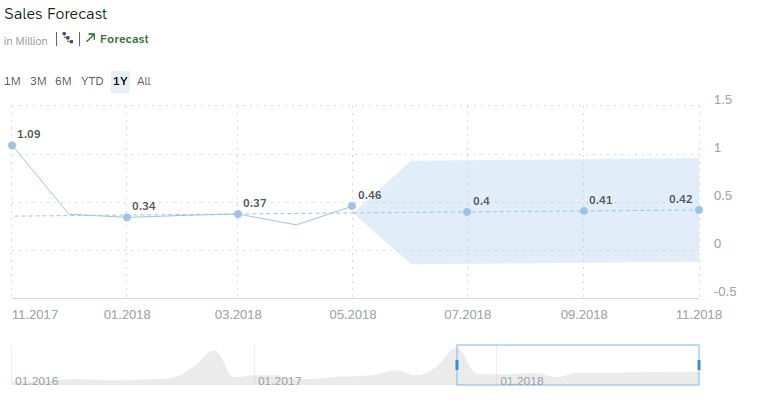Make Smarter Business Decisions
by Vinayak Ashok Gole, SAP Analytics Center of Excellence, Tata Consultancy Services and co-author of Empower Decision Makers with SAP Analytics Cloud
The data warehouse introduced the world to the power of data as an enabler for effective decision making. Historical data provided invaluable information in terms of trends, cycles and patterns. Data driven decisions have evolved in conjunction with the evolution of storage and processing technology. Real time analytics soon found its place in enterprise applications. Embedded within transactional systems, these analytics enabled business users to make decisions “in the moment” and not wait for batch jobs to run to have access to data. SAP Business Warehouse (BW) has been the trusted managed data warehouse over the years and has provided invaluable insights for enterprises. SAP S/4HANA brought in a whole new paradigm with the introduction of CDS views and embedded analytics within the transactional ERP landscape. Both the BW and S/4HANA enabled customers to make critical decisions.
The world now stands at the threshold of a new era. As per Gartner’s top 10 trends in analytics, the next decade will see insights by machines and algorithms. Working in tandem with human minds, these analytical features will drive the next generation decision making by helping people discover hidden insights within the data. Described by the term Augmented Analytics, these features will enable rapid data preparation, transformation, and analysis. In alignment with this trend, SAP has been developing its next gen analytics tool, the SAP Analytics Cloud (SAC) built natively on the cloud. SAC also features a full suite of augmented analytics known as “Smart Assist.”
This article will enable you to understand the “Smart Assist” features of SAC and how they enable rapid decision making. It will also enable you to finalize an approach on which component of the Smart Assist feature to leverage to maximize the value of business decisions.
Introduction to Augmented Analytics
Wikipedia defines augmented analytics as an approach to analytics that employs the use of machine learning and natural language processing to automate analysis processes typically done by data scientists. Coined by Gartner, the approach leverages algorithms to assist in the analysis of data. With statistical methods and machine learning algorithms gaining popularity and availability, augmented analytics have also grown to enable business users to gain better access to data and improve data transformations and visualizations. Having augmented analytics capabilities is a top priority for organizations implementing analytics across the enterprise landscape.
Introduction to Smart Assist
Aligned to the popular trends and with a forward-looking strategy, SAP has been evolving it’s “Cloud First” portfolio of tools to expedite the digital transformation journey of customers. And leading the analytics portfolio in this strategy is the SAP Analytics Cloud. Built from the ground up to leverage the best features of cloud technologies, SAC provides data analytics across business intelligence, planning, and predictive technologies. Customers can rapidly scale up to deliver analytical capabilities and move up from the traditional business intelligence reporting. With self service forming the core tenet, SAC delivers several features to enable the end users to ingest, transform, and analyze data rapidly and easily. And one of the features which end users can easily adapt to deliver best-in-class analytics is the “Smart Assist” Portfolio.
Smart Assist
Smart Assist is the collective group of features which enable augmented analytics in SAC. The Smart Assist portfolio enables features across multiple aspects of data analysis, story creation, conversational analytics, and statistical methods. In this article we will explore each of these features in detail.
Search to Insight

Figure 1 — Search to Insight
In a typical data analysis scenario, end users have to create a SQL query to interact with the data within the database or the analytics cube. However, it is not always feasible for business users to understand the nuances of SQL, resulting in incorrect analysis. The query is then passed on to IT who have to then build a report to cater to the particular scenario.
SAC leverages the features of conversational AI to provide the end users with a state-of-the-art natural language processing (NLP) interface to interact with the underlying data. This feature is known as “Search to Insight.” End users can converse with the underlying data models to get the required information as well as slice and dice the data without any knowledge of the underlying SQL. The Search to Insight feature further assists the end user by providing recommendations for models as well as dimensions within the query.
Search to Insight enables end users to reduce the IT effort and enable self-reliance for data analysis. Business users can form their own analytic queries, the results of which can be incorporated into a story or saved for further analysis.
Smart Discovery

Figure 2 — Smart Discovery
Once data is transformed and analyzed, the next effort is spent in building a visual representation of the data. Typically, a job for the IT team, the story building effort has to go through the process of iterations before the visual representations are available for the business teams to analyze further and operationalize. However, the need of the hour is to have a mechanism for the business teams to have readily available stories which can be plugged into the data rapidly. Not only is the effort saved considerably but also the time saved enables crucial business decisions to be made on time.
Smart Discovery is a unique feature of the Smart Assist portfolio which enables business users to create a whole story, without any effort in building it. The underlying machine learning algorithm scans the entire data set and provides the business user with the requisite information in the form of an overview page, key influencers, unexpected values, and simulation features. The only information required of the users is the selection of the measure. The entire contextual analysis over the available dimensions is carried out and presented by Smart Discovery.
Moreover, Smart Discovery can also be initiated within an existing story. The result can be either consumed in the existing story or can be discarded altogether.
Smart Discovery enables business users to utilize the self-service analysis capabilities of SAC to the fullest, resulting in considerable savings in the development effort.
Smart Insights

Figure 3 — Smart Insights
Each dataset has multiple insights to offer. However, analyzing data is a specialized skill, often not within the skillsets of business users. Machine learning algorithms can rapidly scan through the available data and offer insights to enable the business users to extract maximum value from the available dataset.
This unique feature of churning the data is provided by SAC in the form of Smart Insights. Smart Insights can be enabled within a story and the additional insights provided can be consumed, in part or as a whole within the existing story.
Smart Insights is invaluable during the data exploration process wherein the business users can derive additional insights within the existing dataset. Machine assisted data discovery enables business users to discover hidden trends, resulting in informed business decisions.
Predictive Forecast

Figure 4 — Predictive Forecast
Statistical methods offer the advantage of being able to predict business outcomes based on available data. Predictive analytics is the process of predicting future outcomes based on statistical methods and data mining techniques. Of the multiple methods and algorithms available, time series is a prevalent and popular statistical method for analyzing business trends and outcomes. A typical example for predictive forecast would be for business metrics like sales forecasting which typically follow a trend.
Predictive forecasting in SAC provides the business users with an easy to use interface to bring in linear and triple exponential forecasting into an existing business data analysis. Business users can use the existing dataset and apply the forecasting feature to arrive at decisions aligned with the predictive forecasting. Since the feature is available out of the box, comprehension of complexities of the underlying algorithm can be avoided by the business users.
Predictive forecasting allows the business users to align decisions to the machine forecasted values. This ensures that decisions are backed by solid data and algorithms and are not driven by hunches. Considerable saving in terms of analysis and prediction is saved by employing the ready to deploy predictive forecasting of SAC.
Smart Grouping

Figure 5 — Smart Grouping
Grouping of data as per specific criteria is a time consuming and difficult task. Business users who delve into the task of data analysis are thus faced with the dilemma of accuracy versus speed of analysis, especially if the grouping of data turns out to be incorrect. In the event of such a requirement, a machine assisted algorithm which would smartly group the data based on fixed characteristics would be very handy.
Smart Grouping enables creation of groups of data, especially while building cluster-based charts like scatter charts and bubble charts. The background algorithm skims through the data and creates clusters which can be incorporated by the users into existing charts.
Conclusion
Rapid data processing to uncover trends enables business users to quickly see through the data patterns. Data analysis time is thus reduced considerably. Since groups of data are put out distinctly, business users can also take rapid and critical decisions.
Smart Assist contains a group of distinguishing characteristics for SAC enabling business users to rapidly incorporate data analysis with minimal technical know-how. SAP has been steadily building the Smart Assist portfolio of SAC to deliver improvements and better capabilities. One of the core pillars of the all analytics one platform strategy for SAC, the Smart Assist Portfolio ensures better self-service capabilities for the end users. The efficient use of the Smart Assist Portfolio can ensure not just rapid decisions but also data analytics with minimal IT dependency. Smart Assist can also lower the learning curve of business users enabling them to align with the latest technologies. The Smart Assist tools are undoubtedly the smartest of the capabilities of SAC.







